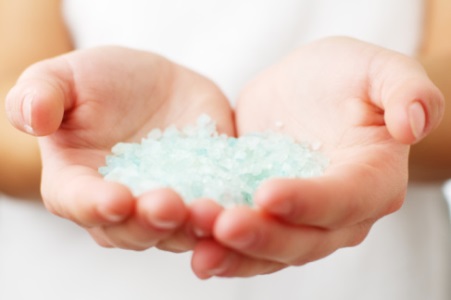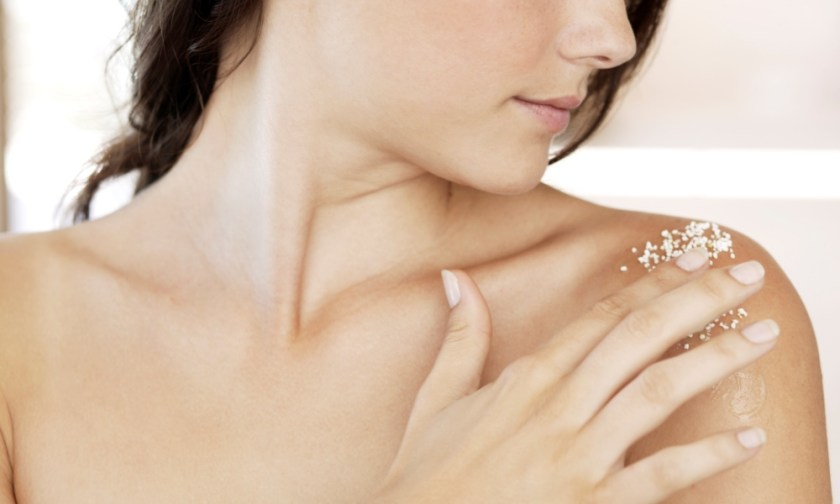Paul Massa says salt is much more than just a tasty food additive. Use it as your natural ally to balance, protect, and restore the body and the skin.
The world salt comes from the Latin term Sal, which comes from the word Sol, the Latin word for Sun. It is also synonymous with the word “sole” (concentrated salt/water solution).
Life on earth came from the interaction of light (sun) with Sole (salt + water = sea/ocean). Salt is naturally found in sea water and accounts for about 3.5 percent of the world’s oceans and it is also found in salt mines.
Sea salt is laden with minerals including magnesium, calcium, sodium, and potassium, all of which play a key role in our skin’s health, function, and cellular communication.
The extraction of sea salt usually includes very little processing so it retains its moisture and mineral content. These minerals are present in a form that is easily utilised and absorbed by the human body through the biological process of osmosis.
Our bodies contain the same concentration of minerals and nutrients as seawater, so it’s no wonder that sea salt is vital to good health and that it is required by the human body in order to function properly.
Salt functions as an electrolyte and assists with regulating the electrical charges within our cells and with osmosis.
What is Osmosis?
We have two oceans of water within our body: one around our cells and one within our cells. When we drink water, our body easily sends water to the ocean around our cells. But to get the water into the cells, salt is necessary to cause the water to be pulled into the cell through an equalising process called osmosis.
This ‘osmotic pump’ works also by attracting water and nutrients from the lower layers of the skin up to the outer layer where moisture is also needed resulting in a plumper skin.
Salt in Cosmetics: properties of salt on the skin
Healing
Sea salt has great healing properties to help relieve dry and itchy skin and skin condition such as like acne, eczema or psoriasis. A good example is the efficacy of balneotherapy (sea salt treatment combined with mud packs and sulfur baths) in the treatment of psoriasis.
Trace minerals in sea salt facilitates healing of inflamed skin by opening up the pores, improving circulation and hydrating the tissues making the skin softer and suppler.
Skincare
Detox: Sea salt is a natural detoxifier for problem skin or acne as the salt absorbs the toxins from the skin. The various minerals found in salt also help those skin conditions: sulfur helps in cleansing and the treating of acne, potassium maintains the water balance in the cells, calcium cleans the pores making the cell membranes stronger and magnesium removes dirt and toxins from the skin.
Exfoliator
Sea salt also can be used as a natural exfoliator. It helps to remove dead skin particles, tones up the skin tissues, encourages peripheral blood circulation, and helps in skin renewal. Salt is a healthy exfoliating agent because the body can absorb all the minerals contained in the sea salt.
 The granular texture of sea salt works very well in providing clean and smooth skin but particular attention should be paid to the texture of the salt depending on the area of the body to be exfoliated.
The granular texture of sea salt works very well in providing clean and smooth skin but particular attention should be paid to the texture of the salt depending on the area of the body to be exfoliated.
Very smooth texture is recommended for facial exfoliation while a slightly coarser texture is suitable for the body. You do not want to scratch the skin when you slough off the dead skin cells but tough skin such as the sole of the feet can take coarser salt texture.
Toner
Salt can be used in toner to reduce facial oiliness and ‘’disinfect’’ the skin before the application of a moisturiser or serum.
Anti-ageing
The mineral content in sea salt has long been appreciated for its rejuvenating effects on the skin.
Most moisturisers are built around ingredients that are occlusive to prevent water evaporation from the skin, and humectants which have a softening, smoothing effect on the epidermis. Adding salt high in mineral content to the formulation can be of importance to ageing skin that needs these ingredients to retain water and increase cellular metabolism.
Magnesium, calcium, sodium, and potassium are critical for proper cell-to-cell communication so replenishing the skin with these minerals can help restart the biological processes that slow down with age.
Mask
Natural mud masks rich in minerals found in sea salt are renowned for their purifying and cleansing properties – they are perfect to totally cleanse the skin. When applied, these types of masks draw out excess oil, dirt and all other impurities allowing the skin to breathe and to retain moisture. They leave the skin firmer, plumper, cleansed, toned and refreshed.
Hair
Hair loss: One of the lesser known benefits of sea salt is the stimulation of healthy hair growth through massages of the scalp with a lotion rich in minerals present in the salt. It improves blood circulation and strengthens the hair follicles.
Sea salt also adds softness, body and bounce to the hair. Essential minerals present in the salt repair, protect the hair and make it shiny. Sea salt has great healing qualities which help damaged hair.
Products with sea salt are perfect to treat dandruff. The salt has a disinfecting action on the scalp, it loosens the flakes to enable penetration of the scalp treatment.
Slimming
 Sea salt also helps in slimming programmes with the detoxification of the body – toxins are flushed out of the pores and blood circulation is improved. By making the skin softer and supple the appearance of cellulite is less visible.
Sea salt also helps in slimming programmes with the detoxification of the body – toxins are flushed out of the pores and blood circulation is improved. By making the skin softer and supple the appearance of cellulite is less visible.
Paul Massa is Managing Director, PHYT’S phyts.com.au




